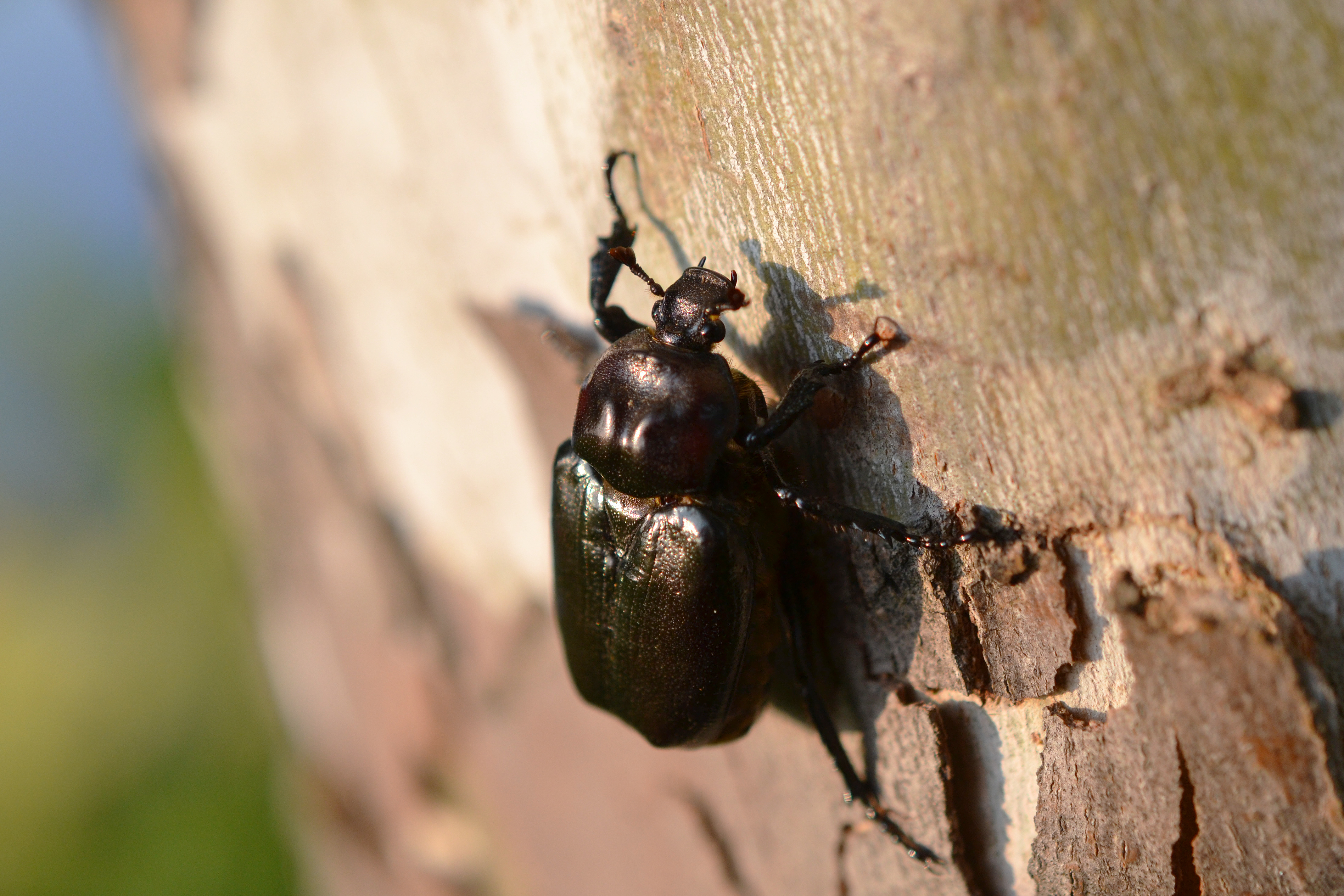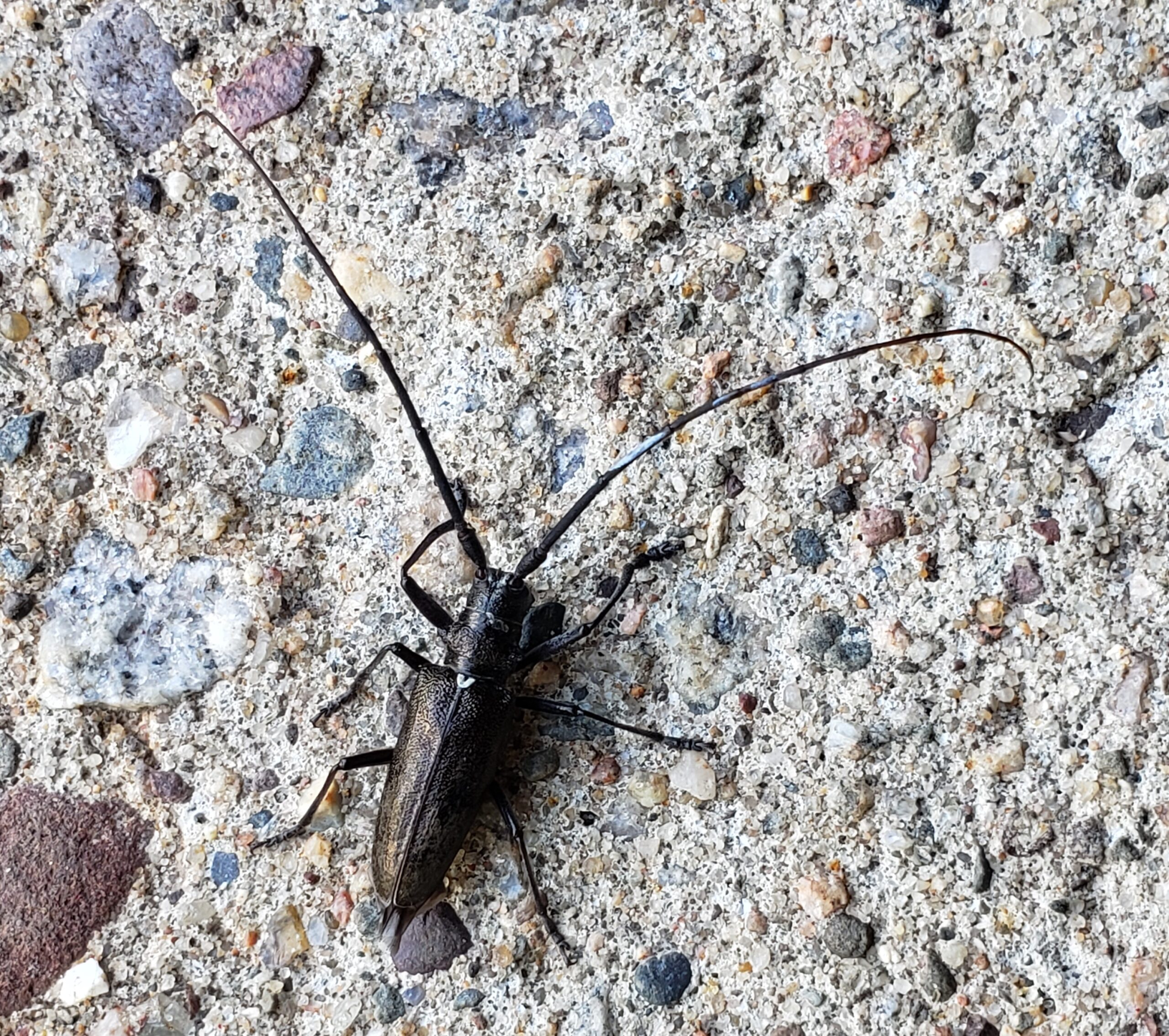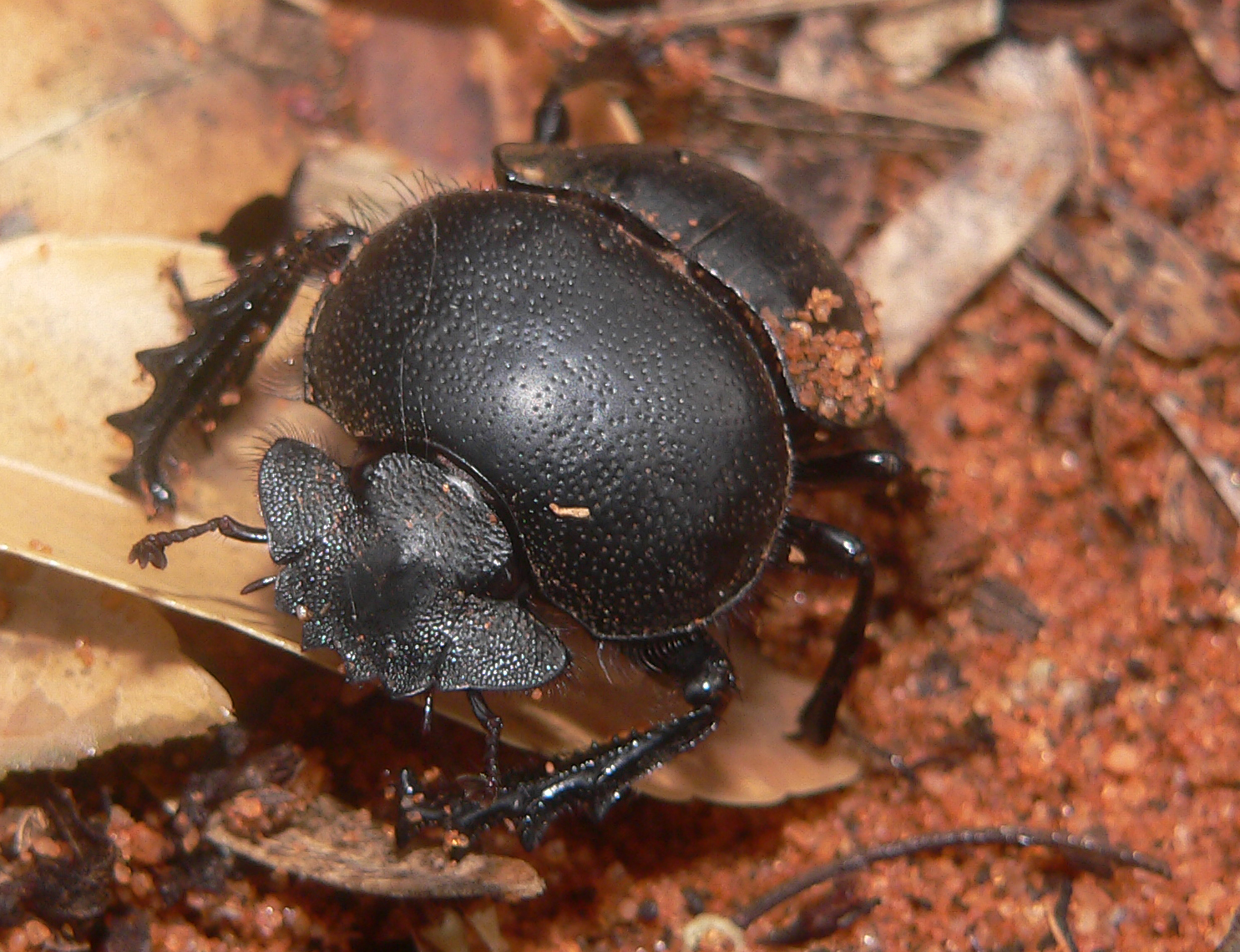Beetles are one of the most diverse groups of insects, with over 350,000 known species in more than 130 families. Among these, black beetles are one of the most common types of beetles. In fact, in their phylogenetic order, Coleoptera, there are more types of these creatures than any other.
Black beetles can be found in virtually all habitable terrestrial and freshwater environments. Knowing about different types of black beetles along with their location in the world can help people identify some of the more common genera of beetles.
You are reading: Discover 10 Types Of Black Beetles
In this article, we will uncover 10 different types of black beetles and find out how big they get and what makes them unique.

10 Types Of Black Beetles
Cedar Beetle
The Cedar Beetle, also known as the Cicada Parasite Beetle, is a species of beetle in the family Rhipiceridae. These beetles are generally reported as flying around or crawling on trees. They have a parasitic relationship with cicada larvae, and female beetles lay their eggs on trees.
Cedar beetles are small, reddish-brown to black beetles that are approximately 1/8 inch (3 mm) long. Larvae are small, cream-colored, legless grubs.
These tiny beetles are relatives of the better-known mountain pine beetle and are found in the western United States. Cedar bark beetles are pests native to Texas and attack cypress and juniper trees.
Pine Sawyer Beetle

The Pine Sawyer Beetle, also known as the Whitespotted Pine Sawyer, is a species of beetle in the family Cerambycidae. These beetles are commonly known as sawyers or pine sawyers because the larvae bore into the wood of pine trees.
The Whitespotted Pine Sawyer is a native beetle that attacks diseased and damaged pine trees. Its range extends from Newfoundland to Florida, west to the Dakotas and Texas.
The Pine Sawyer Beetle is a slow, ungainly flyer and has very long antennae, often longer than their body, with the male’s antennae being longer than the female’s. These beetles are black or dark brown and can grow up to 1.5 inches (3.8 cm) long.
The Whitespotted Sawyer beetle is primarily a minor pest of coniferous trees, especially white pine, balsam fir, and species of spruce.
Rhinoceros Beetle
Rhinoceros beetles are a subfamily of the scarab beetle family, with over 1500 species and 225 genera known. They are commonly known as Hercules beetles, unicorn beetles, or horn beetles.
These beetles are named for the horn-like projections on and around the males’ heads, which they use to fight off other males and win the right to mate with females.
Rhinoceros beetles are herbivorous insects, and the adults feed on fruit, nectar, and sap, while the larvae eat decaying plant matter. These beetles can grow up to six inches (15 centimeters), making them some of the largest beetles in the world.
Read more : 10 Types Of Bees Found In Michigan And Where They Swarm
Rhinoceros beetles are found on every continent except Antarctica, and they live in woodland, parkland, hedgerows, and other habitats.
Some famous species of rhinoceros beetles include the Atlas beetle, common rhinoceros beetle, elephant beetle, European rhinoceros beetle, Hercules beetle, Japanese rhinoceros beetle, ox beetle, and the Eastern Hercules beetle.
Darkling Beetle
Darkling beetles are a very large family of beetles, with over 20,000 species in the family Tenebrionidae. They are commonly found crawling on the ground and are scavengers.
These beetles are typically black or brown, often dull, sometimes shiny, and sometimes have other patterns or colors, notably red.
Many of them lack remarkable colors, pincers, horns, or odd-shaped antennae, and resemble what you might call a “base-model” beetle, or a beetle’s beetle.
The darkling beetle family is one of the largest families of beetles, and in North America north of Mexico, there are about 1,200 species. Adult darkling beetles vary greatly in size and shape, from 2 to 35 mm (1/12 to about 1 1/2 inches) and from flat to cylindrical, while the larvae are about 25 mm (1 inch) long, cylindrical, and wormlike.
Darkling beetles can be found under stones, inside hollowed logs, and roaming sandy dunes and deserts.
Hermit Flower Beetle
The Hermit Flower Beetle, also known as Osmoderma eremicola, is a species of scarab beetle in the family Scarabaeidae. Here are some interesting facts about the Hermit Flower Beetle:
– The Hermit Flower Beetle is one of the largest insects in Iowa.
– These beetles are dark brown to black and are similar in appearance to a June beetle, but not as oval.
– The Hermit Flower Beetle is harmless but has a “leathery odor”.
– These beetles are found in wooded areas around tree trunks and are associated with rotting wood in trees and logs.
– The adult beetles appear in July and can be found from July to September.
– The Hermit Flower Beetle is large, shiny, and dark brown, and can grow up to 21-32 mm in length.
– These beetles occur from southern Canada through the U.S. mid-west and east to Georgia.
Overall, the Hermit Flower Beetle is a fascinating beetle that can be found in North America and is associated with rotting wood in trees and logs.
Dung Beetle

Dung beetles are a type of beetle that feed on feces, and they are found on every continent except Antarctica. Here are some interesting facts about dung beetles:
– Dung beetles come in a variety of colors and can be found in habitats that range from desert to forest.
– Some species of dung beetles can bury dung 250 times their own mass in one night.
– Many dung beetles, known as rollers, roll dung into round balls, which are used as a food source or breeding chambers.
– Dung beetles are important for the ecosystem because they help to break down and recycle animal waste.
– Dung beetles have an acute sense of smell and can find dung from long distances.
– There are about 8,000 species of dung beetles in the family Scarabaeidae.
– Dung beetles are harmless to humans and animals, and they do not transmit diseases.
Overall, dung beetles are fascinating insects that play an important role in the ecosystem by helping to break down and recycle animal waste.
Alaus Oculatus Beetle
The Alaus Oculatus Beetle, also known as the Eyed Elater or Big Eyed Click Beetle, is a species of click beetle in the family Elateridae. Here are some interesting facts about the Alaus Oculatus Beetle:
– The Alaus Oculatus Beetle is a large beetle that can grow up to 1.5 inches (3.8 cm) long.
– These beetles are black in color and have two large white “eyespots” on their pronotum, each surrounded by a thin black ring.
– The Alaus Oculatus Beetle is commonly found in deciduous forests, where the larvae grow in decaying logs.
– The larvae of the Alaus Oculatus Beetle are known as wireworms and are predatory to other beetle larvae feeding in decaying wood, especially Cerambycidae.
– Eggs are laid in soil or on standing deadwood, and the larvae pupate in rotting logs or below the ground.
– The adults emerge in the spring and are commonly found until September.
Overall, the Alaus Oculatus Beetle is a fascinating beetle that can be found in deciduous forests and is known for its distinctive “eyespots” on its pronotum.
Black Carpet Beetle
The Black Carpet Beetle, also known as Attagenus unicolor, is a small beetle that can be a serious household pest. Here are some interesting facts about the Black Carpet Beetle:
Appearance:
– The Black Carpet Beetle is 3-5 millimeters long and can be black or dark brown in color.
– The larvae grow to 7 millimeters in length, are reddish-brown in color, and covered with bristles.
Habitat:
– The Black Carpet Beetle is commonly found in homes, museums, and warehouses.
– The larvae of the Black Carpet Beetle feed on natural fibers, damaging carpets, furniture, and clothing.
– These beetles can also thrive on lint, hair, and debris accumulating under baseboards and inside floor vents and ducts.
Life cycle:
– The whole life cycle of the Black Carpet Beetle under ideal conditions takes about 4 to 5 months, or less if given protein-rich food, such as pet food.
– Adult females are capable of laying 50 to 100 eggs.
– The adults live for a few weeks, just long enough to mate and lay more eggs.
Read more : 7 Types Of Aphids
Overall, the Black Carpet Beetle is a common household pest that can cause damage to natural fibers in carpets, furniture, and clothing.
Carrion Beetle
Carrion beetles are a family of beetles that are known for their scavenging habits and their ability to feed on decaying organic matter such as dead animals. Here are some interesting facts about carrion beetles:
– There are two subfamilies of carrion beetles: Silphinae and Nicrophorinae.
– Nicrophorines are sometimes known as sexton beetles.
– The number of species of carrion beetles is relatively small at around two hundred.
– Carrion beetles are usually black and often have red, orange, or yellow markings.
– The shell-like forewings (elytra) of carrion beetles have a distinctive texture and pattern.
– There are about 30 species of carrion beetles in North America north of Mexico, some more common than others.
– The American burying beetle (Nicrophorus americanus) is a federally threatened and state endangered species and is the subject of a multi-state captive-breeding and reintroduction effort.
– Carrion beetles are attracted to different types of animals (birds, mammals, and so on) and can also seek out dung, rotting fruit, and decaying plant matter.
– The larvae of carrion beetles feed on carrion sinew and skin, under a carcass or on the larvae of other beetles.
– The American carrion beetle (Necrophila americana) has a yellow pronotum with a big black spot in the middle and feeds on fly larvae.
Overall, carrion beetles are fascinating insects that play an important role in the ecosystem by helping to break down and recycle decaying organic matter.
Ground Beetle
Ground beetles are a large family of beetles, the Carabidae, with more than 40,000 species worldwide. They are found in many types of environments, including forests, fields, shorelines, and agriculture. Here are some interesting facts about ground beetles:
Appearance:
– Most ground beetles are small to moderate-sized insects, ranging from about 1/8 to 1/2 inches long.
– They are generally flattened insects with obvious mandibles (jaws).
– Ground beetles come in a variety of colors, including black, brown, and metallic.
Habitat:
– Ground beetles are primarily carnivorous, but some members are herbivorous or omnivorous.
– The adults hunt primarily on the soil surface, but will occasionally climb into the foliage in search of food.
– In addition to the adults being beneficial predators, the burrowing larvae of these beetles seek out and feed on pests in the soil.
– Ground beetles are considered beneficial as they feed on other insects.
Life cycle:
– Ground beetles have a complete metamorphosis, with four life stages: egg, larva, pupa, and adult.
– The larvae of ground beetles are often found in soil and leaf litter, where they feed on other insects and small invertebrates.
– Ground beetles can be found during spring and summer and into the fall.
Overall, ground beetles are fascinating insects that play an important role in the ecosystem by feeding on other insects and small invertebrates.
FAQS
1. What are black beetles?
Black beetles are a diverse group of insects that belong to the order Coleoptera. They are characterized by their hard exoskeletons and forewings that form a protective shell over their bodies.
2. How many types of black beetles are there?
There are many types of black beetles, but in this article, we will focus on 10 different types of black beetles.
3. What are some common types of black beetles?
Some common types of black beetles include the Cedar Beetle, Pine Sawyer Beetle, Rhinoceros Beetle, Darkling Beetle, Hermit Flower Beetle, Southwestern-Eyed Click Beetle, Alaus Oculatus Beetle, Black Carpet Beetle, Carrion Beetle, and Ground Beetle.
4. Where can black beetles be found?
Black beetles can be found in a variety of habitats, including forests, fields, shorelines, and agriculture. Some species are also found in homes and other buildings.
5. What do black beetles eat?
The diet of black beetles varies depending on the species. Some are herbivorous, while others are carnivorous or omnivorous. Some species feed on decaying organic matter, while others feed on other insects.
6. Are black beetles harmful?
Most black beetles are harmless to humans and animals, but some species can be pests that cause damage to crops, furniture, and other materials.
7. What is the largest type of black beetle?
The largest type of black beetle is the Rhinoceros Beetle, which can grow up to six inches (15 centimeters) in length.
8. What is the smallest type of black beetle?
The smallest type of black beetle is the Cedar Beetle, which is approximately 1/8 inch (3 mm) long.
9. What is the most distinctive feature of the Alaus Oculatus Beetle?
The most distinctive feature of the Alaus Oculatus Beetle is the two large white “eyespots” on its pronotum, each surrounded by a thin black ring.
10. What is the role of black beetles in the ecosystem?
Black beetles play an important role in the ecosystem by helping to break down and recycle decaying organic matter, and by feeding on other insects and small invertebrates.
Source: https://petstutorial.com
Category: Animals










